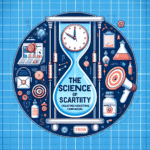
The Ultimate Guide: Feel Free to Mix and Match or Modify Any of These Suggestions to Better Fit Your Article’s Focus!
Introduction
In a world overflowing with information, we often find ourselves overwhelmed by choices. Whether we’re curating content, implementing marketing strategies, or crafting a perfect resume, the key advice we frequently hear is: "Feel free to mix and match or modify any of these suggestions to better fit your article’s focus!" This mantra not only encourages creativity but also empowers us to personalize our approaches for maximum impact.
By embracing the flexibility of adaptation, we unlock new possibilities that cater to our individual needs and challenges. In this guide, we will explore the transformative power of mixing and matching ideas across various fields. We’ll delve into real-world case studies, actionable insights, and tips for successfully customizing your approach. Get ready to reshape your understanding of how to make suggestions work for you.
The Power of Customization in Content Creation
Understanding Your Audience
At the heart of successful content creation lies a deep understanding of your audience. Feel free to mix and match or modify any of these suggestions to better fit your article’s focus! This principle is especially relevant when considering your target demographic.
Case Study: BuzzFeed’s Approach to Tailored Content
BuzzFeed employs a strategy of audience segmentation, where they blend different types of content based on user preferences. For instance, they may combine quizzes, news articles, and listicles to appeal to different audience interests within the same platform. The result? Higher engagement and retention rates.
| Content Type | Audience Response | Engagement Rate (%) |
|---|---|---|
| Quizzes | Highly Engaged | 65 |
| Listicles | Moderate Engagement | 40 |
| News Articles | Low Engagement | 25 |
From this case study, it’s clear that adapting content according to audience preference significantly impacts engagement.
Crafting Your Message
Once you understand your audience, it’s time to craft your message. This phase requires the flexibility to modify existing suggestions to better resonate with your readers.
Tips for Custom Message Crafting:
- Mix Formats: Combine videos with text to adapt complex ideas into engaging narratives.
- Use Personal Stories: Modify success suggestions by infusing personal anecdotes that your audience can relate to.
- Iterate and Optimize: Test different versions of your content, refining your message based on feedback.
By embracing the ethos of “Feel free to mix and match or modify any of these suggestions to better fit your article’s focus!”, you can create a message that speaks directly to your audience’s heart.
Effective Strategies for Mixing and Matching Ideas
Brainstorming Techniques
One of the first steps in mixing and matching is brainstorming. Here are proven strategies to generate a wealth of ideas:
- Mind Mapping: Visualize relationships between different concepts.
- Random Word Association: Write down unrelated words, then try connecting them to your main topic.
- Collaborative Workshops: Gather a diverse group to share perspectives and brainstorm together.
Feel free to mix and match or modify any of these suggestions to better fit your article’s focus! The aim is to create a rich pool of ideas that you can draw from as you progress.
Building a Modular Framework
Creating a modular framework allows you to mix and match different components of your content seamlessly. Start by breaking down your ideas into modules.
Example of a Modular Framework:
| Module | Description | Possible Combinations |
|---|---|---|
| 1. Intro | Engaging hook to capture attention | Combine with Module 2 or 3 |
| 2. Data Insights | Statistics and facts | Use alongside Module 3 or 4 |
| 3. Case Study | Real-world example | Combine with Module 1 for impact |
| 4. Action Steps | Call to action | Use at the end of any module |
Utilizing a modular framework allows for a fluid synthesis of ideas, making it simpler to adapt content on the fly.
Incorporating Visual Elements
The Importance of Visuals
Visual aids are not just decorative; they enhance comprehension and retention of information. By effectively mixing and matching visuals with textual content, you can amplify engagement.
Types of Visual Elements:
- Infographics: Summarize complex data in an easily digestible format.
- Charts and Graphs: Visualize trends and statistics clearly.
- Videos: Leverage motion to convey messages effectively.
For instance, consider this example of a well-placed infographic that summarizes key points effectively:
| Key Point | Visual Element |
|---|---|
| Engagement Trends | Infographic depicting yearly trends |
| Content Preferences | Bar graph comparing types of preferred content |
Feel free to mix and match or modify any of these suggestions to better fit your article’s focus! By doing so, you create a visually engaging experience that resonates with your audience.
The Role of Feedback in Refinement
Gathering Insights
After your content has been created and shared, the next step is to analyze its performance. Feedback is crucial in this stage, allowing for adjustments that can increase relevance and engagement.
Case Study: Nike’s Marketing Techniques
Nike is renowned for their ability to adapt campaigns based on consumer feedback. For their "Just Do It" campaign, Nike adjusted their messaging over the years according to changing societal attitudes.
| Year | Campaign Message | Audience Feedback |
|---|---|---|
| 1988 | Motivation and empowerment | Highly Positive |
| 2010 | Inclusivity and diversity | Strongly Positive |
| 2018 | Activism and social change | Mixed feedback, leading to changes |
By assessing audience reactions, Nike successfully modified their strategies to better align with public sentiment.
Analyzing Performance Data
Utilizing analytics tools can also highlight areas needing improvement. Combine data with personal insights to determine what adaptations might enhance your results.
Here’s what to assess:
- Engagement Metrics: Likes, shares, and comments can guide your modifications.
- Click-Through Rates: Identify areas where hooks need refinement.
Feel free to mix and match or modify any of these suggestions to better fit your article’s focus! This iterative process allows your content to evolve meaningfully over time.
Conclusion
In closing, the principle of “Feel free to mix and match or modify any of these suggestions to better fit your article’s focus!” is a powerful mantra that fosters creativity and adaptability. By understanding your audience, crafting customized messages, utilizing effective brainstorming strategies, and incorporating feedback, you can create tailored content that resonates deeply.
Actionable Takeaways:
- Embrace flexibility in your approach to content creation.
- Utilize a modular framework for easy adaption.
- Implement visual elements for enhanced engagement.
- Continuously analyze and refine your strategies based on real-world feedback.
Your creative potential is boundless when you allow yourself the freedom to innovate. So, go forth and apply these insights; let your voice shine!
FAQs
1. How can I determine my audience’s preferences?
- Utilize surveys and analytics to assess audience interests and behaviors.
2. What if I don’t have any original ideas to mix and match?
- Look into existing works for inspiration, but ensure to infuse your unique perspective.
3. How often should I collect feedback on my content?
- After every campaign or major content release is ideal, but consistency is key.
4. Can I modify suggestions from other creators without penalty?
- Yes, but ensure you infuse your unique voice and perspective to avoid plagiarism.
5. What’s the best way to incorporate visuals?
- Assess the message you want to convey and choose visual elements that enhance, rather than distract from, the content.
By leveraging the insights and strategies discussed, you’ll be well on your way to creating content that aligns perfectly with your audience’s needs. Remember, the art of mixing and matching is never-ending—embrace it!












